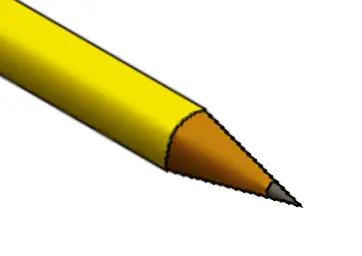Reverse titration?
(Intro) This speech is my recital, I think it’s very vital To get it right, the endpoint’s white— Titrate! Titrate! Here we go!
(Chorus) It’s tricky to turn it white, to turn it white would be real tight Let’s titrate! Titrate! Titrate! Titrate! It’s tricky to turn it white, to turn it white would be real tight Titrate! T-t-t-titrate! Titrate!
(Verse 1) I set up in the lab, a burette in my hand A flask of acid, now add the base, it’s goin’ just as planned But if I go too far, then I will lose my star So I drop it slow, watch it flow, ‘til the pink is out that doh’!
(Chorus) It’s tricky to turn it white, to turn it white would be real tight Lets titrate! Titrate! Titrate! Titrate! It’s tricky to turn it white, to turn it white would be real tight Titrate! T-t-t-titrate! Titrate!
(Verse 2) In the lab, we gotta grab some phenolphthalein One drop too much, the shade will clutch, and wreck the whole routine! The pH curve is steeper when you’re near that equivalence point So add it slow—just one more drop mo’, and then we’re out this joint!
(Chorus) It’s tricky to turn it white, to turn it white would be real tight Let’s titrate! Titrate! Titrate! Titrate! It’s tricky to turn it white, to turn it white would be real tight Titrate! T-t-t-titrate! Titrate! Titrate!
(Outro) We don’t quit, y’all, keep that pipette Keep on drop-drop-drippin’ 'Cause this is it!
Glorious
i may just have had bad teachers but i to this day have no idea what chemistry at pre-university level were supposed to teach. the labs were all about watching things change, with no explanation as to why. and the theory parts were all about balancing reactions. none of it connected.
Very similar to my experience. It was even worse for organic chemistry where they just parroted out the outcomes/mechanisms with not much explanation. But maybe it’s also difficult to explain chemistry without some solid physics prerequisites
My high school chemistry teacher was a professional chemist working as a teacher so she’d be home when her kids got home, and yeah I think I had a different experience. Several of our labs were more thermodynamics related. One was to create a temperature based can crushing method. But yeah she’d ask us what we thought would happen and tell us to go figure out. That said we did have the “learn to titrate” labs too, but we were told that’s what was happening.
my first chemistry lab (like actual chemistry, rather than as part of the “sciences” subject) involved us mixing three components we were not given the names of in a test tube, then we would go out to the school yard and while we were holding the test tubes with tongs the teacher shoved a match into each of them to show the efficacy of the black powder we had just unknowingly made. there was so much glass everywhere.
like, it was cool, but i don’t think anybody learned anything from that other than how to make black powder, which i imagine most people with a dad learn at one point or another.
AP chem courses had some small value. Frankly I think all of chemistry throughout all years of school would be better taught as a crash course in a year in Middle school, with a refresher in highschool… Then teach more bio instead, it’s more valuable to the everyman
Yup, luckily in my case I got into amateur chemistry (tysm sciencemadness) but it pained me to see my friends not actually knowing anything and just memorizing everything by the letter
amateur chemistry
So… cooking meth?
nah, that’s generally frowned upon among the people who do chemistry at home both because it’s not economically viable, will get you in jail and it may cause further restrictions on chemicals, which nobody wants or needs
I mostly do energetics/explosives on a small scale and the occasional organic synthesis
if you want, there’s an amazing yt channel called Explosions&Fire which perfectly encapsulates the whole spirit of doing chemistry in your shed
You ought to get the balance right for things to change the way you like.
Titration is a great example of using the inverse. You get the colour by creating the balance. Then you can calculate the unknown side from the balance with the known side.
Now you can use the knowledge that your your base/acid is of a certain concentration to get the reaction you want to do right.
As for the specifics, once you get to organic chemistry in Uni it doesnt connect to make sense either, unless you really dive into the deep end of it.
i don’t understand this reply.
You know how old scales worked by putting weights you know on one side, until things got balanced with the weight of the item you want to measure?
You do the same, but with acid and base, where you know the “weight” of one side of it.
i’m saying i don’t understand the reply in the context of what i wrote. it may be a difference in terminology, but when i said “balance reactions” i was talking purely about on paper. we got a bunch of formulas and were to fill in the result like a multiplication table. i don’t know if i’ve ever had to do that in practice. labs were always just “n moles of chemical a, n moles of chemical b, observe the precipitation” over and over again. it was only years after school that i realized that precipitation occurs when a solution is saturated.
Yea, this articulates my experience as well.
deleted by creator
What a high it was when I did titration in high school and managed to get so close that the liquid appeared colorless unless you held a white sheet of paper next to it.
It was tinted, but just barely.
I also managed to did that once, but after a while (20 seconds or so) the color started to fade and we had to add more, and overshooting miserably
Same, but my professor said I needed to keep titrating and that it needed to be a very specific light pink which she never bothered to specify in the entire semester. 🙃
The chosen one!
I did this once too I was using half drops with a DI water squirter to rinse them into solution
Removed by mod
I still don’t know what titration was about. Only that the solution was supposed to either turn pink or orange in some cases💀🙏
Suppose you are trying to determine the concentration of a solution. You could try to boil off the water and figure out how much solid stuff is left over, but what if it’s a mixture, and you just want to know how much, for instance, “Hydrochloric Acid” is in the water. Or, alternatively, some chemicals (such as Hydrochloric acid) evaporate with the water. We need a way to figure out the concentration of this chemical ( we’ll call it “Chemical X”) without trying to pull it out of the solution.
So, you need to know how much Chemical X is in your solution, but you can’t really easily separate it from the solution. What do you do? You Titrate! You find some other chemical that reacts with Chemical X, so that this new chemical (which we will call Chemical Y) will get instantly destroyed as long as there is still more Chemical X in solution. So, as long as there is more Chemical X in solution, the Chemical Y will get eaten up instantaneously, reacting with Chemical Y.
Finally, you just need to have some way of detecting whether any Chemical Y exists in the solution, since the moment you see it in solution, you know there’s no more Chemical X to eat it up.
Now, you titrate: take a specific volume of your sample solution, and add a known concentration of Chemical Y, drop by drop. Once there is any chemical Y left over, you know you have found how much Chemical X was in the solution to start. Congratulations, you now know the concentration of Chemical X in the sample solution.
Thanks, but I’m now past the point where this info is useful to me. If this came 3 years ago though…
Knowledge always has the capacity to become useful again at some point
Quantitative analysis flashbacks form this, I learned the fastest way to figure out how much reactant you need to figure out the tipping point of the ph was to just run quickly adding large jumps of aloquates on the first attempt ,let it turn dark, then on the next one go ahead and add a safe amount of reactant I found from the first attempt then go super slow with the drip rate after. Was pretty consistently one of the first to leave lab
Micropipettes ftw!
hplc ftw
using mouth pipettes for dimethylmercury
To quote an old teacher “a little benzene never killed anyone, and it’s great for cleaning lab tables”
Turned out that actually, he was half right.
What about for a 20+ mL titration? Also how would you quantify the exact volume for the endpoint if it’s when the plunger is half depressed?
Its not really hard how boring it is.





